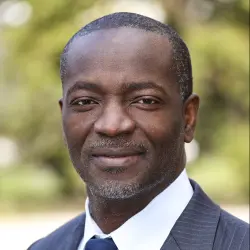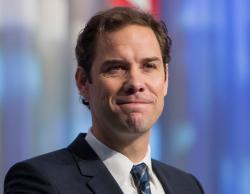

10:00 am EDT - 11:30 am EDT
Past Event
10:00 am - 11:30 am EDT
1775 Massachusetts Avenue N.W.
Washington, DC
20036
The joint efforts of government, nongovernmental, multilateral, and philanthropic organizations around the world—mobilized through and alongside the Sustainable Development Goals (SDGs)—have resulted in unprecedented global progress in ending extreme poverty, reducing inequality, and promoting environmental sustainability. Yet, despite the progress achieved, many people have been left behind—especially those from marginalized communities—due in part to the pandemic’s effects on already lean budgets. As a result, governments and funders are looking toward innovative forms of financing to help bridge the gap.
One innovative mechanism—social and development impact bonds (SIBs and DIBs)—combines elements of impact investing, results-based financing, and public private partnerships: Private investors bring in upfront financing, with repayment only if the intervention succeeds.
One project, the Village Enterprise DIB—launched in 2017 and recently concluded—targeted first-time entrepreneurs living in extreme poverty in Kenya and Uganda through a graduation model approach aimed at increasing consumption levels and assets. This DIB has demonstrated the potential to unlock more diversified funding opportunities from the development community, as well as the strength of an outcome-focus in ensuring sustainable impacts.
On April 26, the Global Economy and Development Program hosted its first-ever hybrid in-person and webcast event that brought together key stakeholders from the Village Enterprise DIB project with high-level experts and critical thought leaders. Panelists from the development community shared lessons learned and explored the potential and limitations of the impact bond approach as a tool to address global poverty challenges.
The event opened with remarks by Brahima Coulibaly, vice president of the Global Economy and Development Program, who framed the need to act more forcefully and innovatively to address the estimated 690 million individuals living in extreme poverty. In particular, he noted a “perfect storm” of financing constraints for developing countries, with widening budget deficits, deteriorating sovereign debt outlooks, and rising interest rates.
Deputy Executive Secretary and Chief Economist of the UN Economic Commission for Africa, Hanan Morsy, delivered poignant keynote remarks, which continued the framing of the big-picture challenges when it comes to poverty alleviation. The existing challenges to the world’s poorest households—with large concentrations in sub-Saharan Africa—have been made even worse by the COVID-19 pandemic, in particular the “reversal of very hard-won gains in the reduction of poverty on the continent.” Morsy noted the immense financing gaps needed to reach global SDG targets by 2030, the impact of the pandemic on the already precarious budget forecasts, and the even more urgent need for innovative solutions.
Following Morsy’s remarks, Senior Fellow Emily Gustafsson-Wright moderated a panel focused on the experience and broader implications of one such innovative solution, the Village Enterprise DIB. As CEO of IDinsight Ruth Levine shared, despite the challenges of COVID-19 for both service delivery and evaluation, the DIB proved successful in achieving its targets—with an average 6 percent household consumption and household net assets as a result of the program, as demonstrated by a randomized control trial.
A key focus of the conversation was the role of the DIB structure in centering the experience of the beneficiary, or end user, in the design and adaptation of services. Taddeo Muriuki, vice president of Africa Operations with Village Enterprise, discussed the importance of tailoring services to the needs of beneficiaries and the role that data play in decentralizing decisions, with field staff empowered by dashboards to tailor their services in real time so that beneficiaries receive the maximum potential positive impacts on their lives and businesses.
Considering the success of the DIB program, much of the panel’s conversation focused on questions of scale: how to go from a successful intervention to meeting the enormous scale of the challenges laid out in the early remarks. Avnish Gungaduross, managing partner and co-founder at Instiglio, noted that in order to scale the set of best practices and expertise of outcomes-based financing, there will need to be more work directly with governments, which will require mindset shifts within public financial management. In response to an audience question about the binding constraint of bringing innovative finance programs to scale, Gungaduross came back to the focus on beneficiaries: “The unfortunate reality is that our funding and programming systems are so insufficiently accountable to those we serve.” This necessitates, he argued, a greater focus on implementation—in addition to the evidence base of “what works”—and to tackle the big challenge of how to replicate these positive impacts through more effective implementation at scale.
The panel also posed interesting questions for investors and funders to consider for this type of financing. Ruth Levine’s advice to funders was first to consider whether this funding mechanism is more likely to lead to better ultimate outcomes than the traditional way of doing business. She also suggested to funders to “know thyself,” in order to understand whether an individual organization is structured to fund programs in a way that allows careful negotiation, and then give space for service providers to innovate.
Brian Boland, co-founder of the Delta Fund, challenged investors to bring more risk capital to bear in looking beyond return on investment in a balance sheet to true social benefits in tackling global challenges. With $1.2 trillion in assets within U.S. foundations and another $5.6 trillion in the family offices of the ultra-wealthy, Boland encouraged these entities to take greater risks. One approach to this is pooling investments within a portfolio of varied risk levels, which would bring capital to interventions that are less proven and in need of more evidence and documented success, to bring new innovative financing methods to scale. These risks could be balanced within the portfolio by investments in proven interventions, such as the graduation model of Village Enterprise.
Following the panel, a fireside chat with John McArthur, senior fellow and director of the Center for Sustainable Development at Brookings, drew on themes raised in the earlier conversations. McArthur remarked that one of the most fundamental challenges in financing the SDGs is that the current development financing system is not built to do so (“There’s not enough of the good, and certainly not enough to match the goals we’ve agreed to”), echoing the challenges of the scale of the financing gap and the regulatory hurdles outlined by Coulibaly and Morsy at the beginning of the event. On the question of scale through institutional reform, McArthur highlighted the need to anchor consideration of several elements that were discussed throughout the day—evidence-based funding of what works and how, multistakeholder governance that integrates the voices of beneficiaries, and working alongside crucial public sector entities with the budget to match.
9:30 am
10:00 am

10:05 am

10:15 am
11:15 am

11:30 am

Homi Kharas, Charlotte Rivard
April 16, 2024

Homi Kharas, Vera Songwe
April 15, 2024

Douglas A. Rediker
April 15, 2024